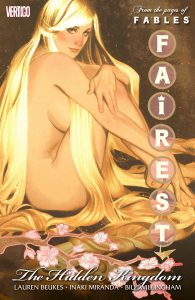 I’m going to start in a couple of weird places. First, a word about Amazon. I understand that it has turned into something of a flea market, like, from an observational perspective. This doesn’t bother me because I can mostly tell what I’m buying and what I’m not. I hear people talk about counterfeits, and I believe it, but I’m either okay at this or lucky, and either way, yay. I bring this up because I just saw something unpleasant while preparing for this review. The link I found for The Hidden Kingdom indicates that it’s not Prime eligible and is being sold by a third party vendor, which is fine as far as it goes, except that it also shows the notification that I bought it from this link in 2013. When it definitely was Prime eligible and being sold directly by Amazon. Is that as messed up as I think it is? It seems deeply troubling. But where else am I going to buy, well, everything except food?
I’m going to start in a couple of weird places. First, a word about Amazon. I understand that it has turned into something of a flea market, like, from an observational perspective. This doesn’t bother me because I can mostly tell what I’m buying and what I’m not. I hear people talk about counterfeits, and I believe it, but I’m either okay at this or lucky, and either way, yay. I bring this up because I just saw something unpleasant while preparing for this review. The link I found for The Hidden Kingdom indicates that it’s not Prime eligible and is being sold by a third party vendor, which is fine as far as it goes, except that it also shows the notification that I bought it from this link in 2013. When it definitely was Prime eligible and being sold directly by Amazon. Is that as messed up as I think it is? It seems deeply troubling. But where else am I going to buy, well, everything except food?
Then, a word about covers. I’m not a stranger to covers of comics collections that I read being only adjacent to work safe, and it’s not especially difficult to work around it. If I happen to have time for a reading break, it’s easy to read with the cover concealed, and when I do not I can just flip it over. So I’m a little annoyed that this book shows a different issue cover on the back side, which has an equivalent amount of Rapunzel nudity, only this time a kitsune is making out with her. Not a big help guys! And then, worse: the issues in this series were both written and penciled/inked by women, but the covers of the issues… you guessed it. Brotown. (The one to-be-fair is that the kitsune makeout scene cover is basically lifted straight out of the issue in question, but that doesn’t really alleviate much of my logistical or sexist concern. I don’t like being put in the position of having to come out against nudity in art, but, damn.)
Okay. That was a lot of words about not the book I’m reading. Cool. Moving on.
And then haha I didn’t move on, I did something else and later forgot I never finished the review, and now a month has passed. Super cool.
So, uh… there’s Rapunzel, right? And she’s on a quest to revisit her past between her early days as the adopted daughter of Frau Totenkinder[1] and her current days as a refugee in Fabletown[2], insofar as a) she wants to find her missing child that has been lost to her since its birth and b) she has been summoned by the past anyway, to Japan where the Japanese-style fables implausibly ended up while fleeing the expansionist emperor guy who used to be the bad guy of the series. Because that’s a lot of where she spent her time between child loss and fleeing the empire thing. Was in the land of Japanese fables. Before they went to Japan.
I am nailing this.
Then there’s also a one-shot wherein a tree lady dates a fox. With unexpectedly ominous hints about the future!
[1] Somehow, it never crossed my mind before to look up what the “toten” part of Totenkinder means in German. That’s awesome.
[2] This is a flashback, set some years before the series opened back in Fables #1.
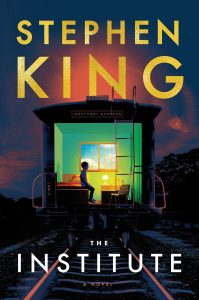 It’s nice to have read a book within a reasonable timetable for a change. I mean, sure,
It’s nice to have read a book within a reasonable timetable for a change. I mean, sure, 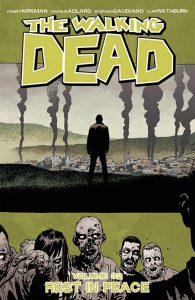 I’ve been saying since… well, at least since the end of
I’ve been saying since… well, at least since the end of 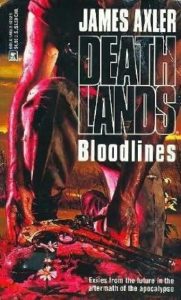 I know mostly all I do is complain about being behind and/or working constantly. But here’s my point. I read another Deathlands book, right? This is the book I take camping because I might finish one or two over a long weekend, all while helping with a giant fireworks show plus explosion, and also getting up to who knows what all manner of shenanigans. (I mean, I know, but this is a public forum, of however limited readership.)
I know mostly all I do is complain about being behind and/or working constantly. But here’s my point. I read another Deathlands book, right? This is the book I take camping because I might finish one or two over a long weekend, all while helping with a giant fireworks show plus explosion, and also getting up to who knows what all manner of shenanigans. (I mean, I know, but this is a public forum, of however limited readership.)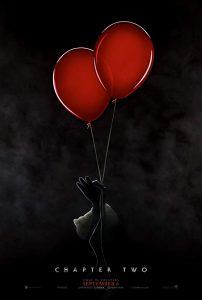 Remember that time where they took my very favorite book and made it into
Remember that time where they took my very favorite book and made it into 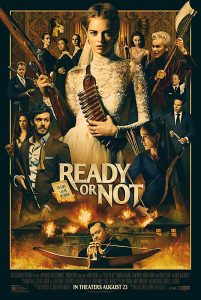 Here’s how you can tell you’re too far inside an industry: when I watched
Here’s how you can tell you’re too far inside an industry: when I watched 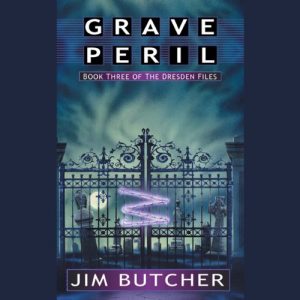 Last week / weekend was a big driving vacation (let’s say) to GenCon. Which was cool and completely exhausting but I think pretty cool, but I’m really disappointed that I never managed to do anything much towards getting in on any games. I will be a little choosier about getting involved with something on the next con with signups that I go to. (Which is probably most of them, but not so much BGG.)
Last week / weekend was a big driving vacation (let’s say) to GenCon. Which was cool and completely exhausting but I think pretty cool, but I’m really disappointed that I never managed to do anything much towards getting in on any games. I will be a little choosier about getting involved with something on the next con with signups that I go to. (Which is probably most of them, but not so much BGG.)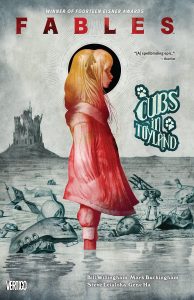 Someday, I will write a review that does not start off discussing how far behind I am and how that’s highly unlikely to change. Today is certainly not that day, in that, at the end of a week of work, I got maybe halfway through my list of tickets once, and I’m positive that a lot of them are waiting on me to do work to proceed. Which is why I never read, which is why I’m actually not very far behind, or wouldn’t be if I hadn’t been on a long drive that included finishing an audiobook. But this is not about that.
Someday, I will write a review that does not start off discussing how far behind I am and how that’s highly unlikely to change. Today is certainly not that day, in that, at the end of a week of work, I got maybe halfway through my list of tickets once, and I’m positive that a lot of them are waiting on me to do work to proceed. Which is why I never read, which is why I’m actually not very far behind, or wouldn’t be if I hadn’t been on a long drive that included finishing an audiobook. But this is not about that.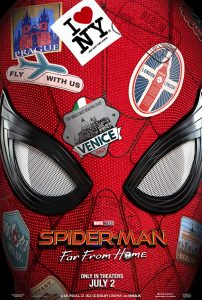 I saw the new Spider-Man movie over two weeks ago. You may consider primal scream therapy to be occurring during the paragraph break, because, seriously. I am consistently too busy when at work and too mentally drained when not at work to do almost anything thinky, and yet the further from the movie I get and the more other reactions I see, the harder the thinking part of a review becomes. It’s awesome[1].
I saw the new Spider-Man movie over two weeks ago. You may consider primal scream therapy to be occurring during the paragraph break, because, seriously. I am consistently too busy when at work and too mentally drained when not at work to do almost anything thinky, and yet the further from the movie I get and the more other reactions I see, the harder the thinking part of a review becomes. It’s awesome[1].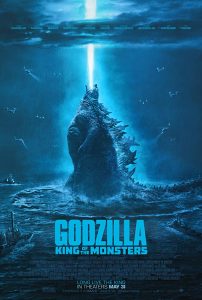 Thanks to punctuation, I don’t need to point out that this is distinct from the 1956 movie where Godzilla and his title are separated by a comma instead of a colon. I guess I did anyway, but these are the things I think about when searching IMDB for the correct link.
Thanks to punctuation, I don’t need to point out that this is distinct from the 1956 movie where Godzilla and his title are separated by a comma instead of a colon. I guess I did anyway, but these are the things I think about when searching IMDB for the correct link.